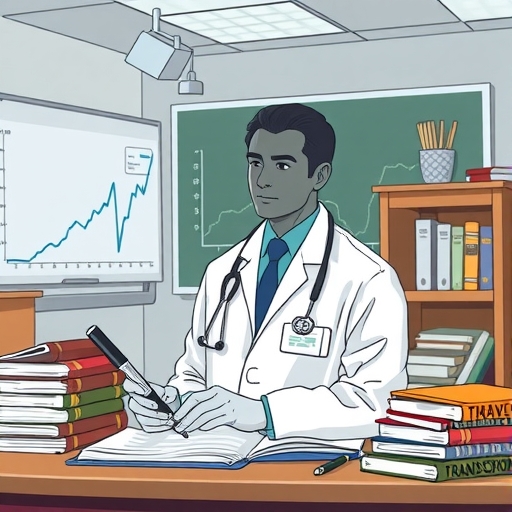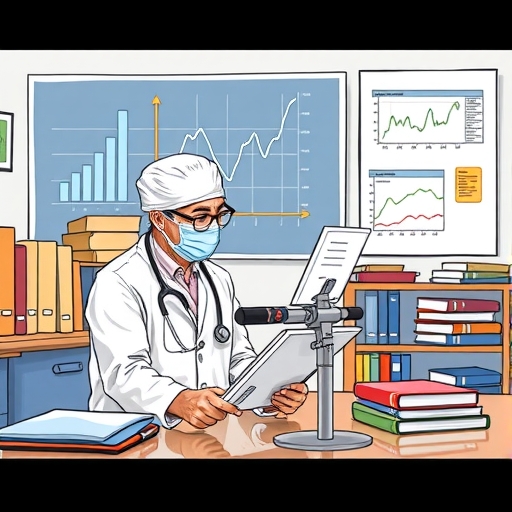From Scalpel to Scion: How Michael Burry’s Unique Education Forged an Investing Legend
We’ve all heard the name Michael Burry, perhaps most famously depicted in the film “The Big Short,” for his uncanny foresight in predicting the 2008 financial crisis. His story is compelling, not just for the accuracy of his prediction, but for his decidedly unconventional path to becoming one of the most recognized investors of our time. Unlike many Wall Street titans who followed a traditional finance trajectory, Burry began his professional life on a completely different track: medicine.
Think about that for a moment. A medical doctor, trained to diagnose and treat human ailments, pivots to diagnosing and profiting from the sicknesses within financial markets. How does someone make such a dramatic career shift, and more importantly, how did his initial training in medicine inform his later success in finance? That’s precisely what we’re going to explore together. We will delve into the intricate details of Michael Burry’s education, his transition, and how his diverse background potentially equipped him with a unique analytical perspective that allowed him to see what others missed.
For you, whether you’re just starting your investing journey or looking to refine your technical analysis skills, understanding Burry’s story offers invaluable lessons. It highlights the power of rigorous analysis, independent thinking, and the unexpected ways different fields of knowledge can intersect to provide a competitive edge in the complex world of finance. Let’s peel back the layers of this remarkable journey.

To navigate the complexities of finance successfully, aspiring investors can consider the following key points from Burry’s story:
- Interdisciplinary Approach: Burry’s education encompassed diverse fields, combining insights from medicine and finance.
- Data-Driven Analysis: His training in medicine emphasized the importance of detailed analysis and pattern recognition, skills that proved invaluable in finance.
- Adaptability: Burry’s ability to pivot from medicine to finance underscores the potential for applying skills across different domains.
The Academic Tapestry: Weaving Economics, Science, and Humanities
Michael Burry’s formal educational journey began at the University of California, Los Angeles (UCLA). Here, he pursued a Bachelor of Arts (BA) degree. What might surprise you is the blend of subjects he chose. His studies were not limited to a single, narrow field. He delved into Economics, English, and Biochemistry. It’s a combination that seems almost designed to foster a broad, interdisciplinary perspective, isn’t it?
Consider the components of this undergraduate education. Economics provides the foundational understanding of market forces, supply and demand, and financial systems. English, on the other hand, hones critical reading, writing, and communication skills – essential for dissecting complex financial documents and articulating investment theses. Biochemistry brings a rigorous scientific method, focusing on detailed processes, data analysis, and understanding complex systems at a fundamental level.
Noticeably absent from his UCLA curriculum was formal accounting. This is quite striking for someone who would later make millions by meticulously sifting through corporate balance sheets and financial statements. It suggests that his later financial knowledge was likely acquired through means outside of traditional coursework, a theme we will revisit. This initial blend of subjects at UCLA laid a unique groundwork, providing him with analytical tools from diverse disciplines before he even contemplated a career in finance.
| Major | Skills Gained |
|---|---|
| Economics | Understanding market forces and financial systems |
| English | Critical reading and communication skills |
| Biochemistry | Data analysis and scientific rigor |
From Arts to Anatomy: Pursuing the Medical Path at Vanderbilt
Following his undergraduate studies, Michael Burry took a significant step further into the sciences by enrolling in Vanderbilt University School of Medicine. He earned his Doctor of Medicine (MD) degree from Vanderbilt in 1997. Medical education is notoriously demanding, requiring intense memorization, deep understanding of complex biological systems, diagnostic skills, and the ability to work long hours under immense pressure. It’s a world of detailed observation, pattern recognition (identifying diseases from symptoms and test results), and understanding interconnected systems (the human body).
Think about the skills honed during medical school. You learn to process vast amounts of information, identify anomalies, understand causal relationships (how one factor influences another), and make critical decisions based on incomplete data. You are trained in differential diagnosis – considering multiple possibilities before arriving at the most likely conclusion, a skill surprisingly applicable to financial analysis where multiple market factors are at play.
This rigorous training in medicine undoubtedly instilled in Burry a discipline and analytical depth that would later serve him well. While his peers might have been studying financial modeling or corporate finance, he was mastering anatomy, physiology, and pathology. This difference in training is a core part of his story. It represents a significant detour from the conventional path to Wall Street, yet it may have provided him with a distinct lens through which to view the financial world – perhaps less influenced by prevailing market sentiment and more focused on fundamental data, much like a diagnostician focusing on a patient’s lab results.

The Stanford Residency and the Growing Pull of Finance
After completing his MD at Vanderbilt, Michael Burry began a residency in Pathology at Stanford University Medical Center. Residency is the period of postgraduate medical training where doctors specialize in a specific field. Pathology involves studying the causes and effects of diseases, often through examining tissues, cells, and body fluids. It is a field that requires meticulous attention to detail, pattern recognition, and diagnostic acumen based on concrete evidence.
However, while immersed in the world of pathology, Burry’s interest in financial investing, which had begun as a hobby, started to consume more and more of his time and energy. He was reportedly dedicating off-duty hours – often late into the night after demanding hospital shifts – to researching companies, analyzing financial statements, and discussing investment ideas online. This wasn’t just a casual interest; it was a deep dive, demonstrating a profound passion and commitment that paralleled the intensity of his medical training.
Despite the significant investment of time and effort already put into his medical career – years of schooling, rotations, and now residency at a prestigious institution like Stanford – the allure of finance proved stronger. He ultimately made the difficult decision to leave his residency after his third year, just shy of completion. This pivotal choice marked his full transition away from the medical field towards a career dedicated entirely to finance. It wasn’t a rash decision, but one made after years of parallel development, where his financial expertise had grown from a fervent hobby into a demonstrable skill set attracting attention.
Cultivating Expertise: The Self-Taught Investor Emerges
One of the most compelling aspects of Michael Burry’s journey is the fact that he built a substantial part of his financial expertise outside the traditional academic or professional finance channels. While juggling the demanding schedule of medical school and residency, he was simultaneously conducting deep research into value investing principles.
His primary classroom during these years seems to have been late nights spent poring over financial texts and engaging with other investors online. He became a prolific participant on online message boards, particularly Silicon Investor, where he shared his detailed analysis and investment ideas. His insights, often backed by rigorous fundamental analysis, began to gain recognition among a growing audience.
Beyond message boards, he also ran his own finance website, valuestocks.net, starting in the mid-1990s. This platform served as an outlet for him to publish his investment research and analysis, further solidifying his reputation as a keen value investor even before he left medicine. He even worked as a freelance financial journalist for a time, an experience that likely sharpened his ability to analyze and articulate complex financial concepts. This period highlights a crucial point: formal education provides a foundation, but often, true mastery in a field like finance comes from dedicated, self-directed learning and practical application.
For you as an aspiring or developing investor, Burry’s example is powerful. It shows that a lack of a traditional finance degree is not an insurmountable barrier. What is crucial is the commitment to continuous learning, rigorous analysis, and the willingness to develop your own perspective, much like he did through his late-night studies and online engagements. It emphasizes that the best education is often the one you pursue yourself, driven by genuine curiosity and passion.

The Pivotal Leap: Founding Scion Capital
The decision to leave a promising medical career at Stanford to start a hedge fund was undoubtedly a massive leap of faith. In June 2000, Michael Burry officially transitioned from medicine to finance, founding Scion Capital. The timing was significant – right around the peak of the dot-com bubble. This environment, characterized by irrational exuberance and speculative frenzy in technology stocks, was fertile ground for a value investor like Burry, who was trained to look for intrinsic worth rather than chasing momentum.
Starting a hedge fund requires not only investment acumen but also entrepreneurial skill, the ability to attract investors, and the discipline to manage capital through volatile markets. Burry started Scion Capital with seed money from family and friends. His early success in navigating the dot-com bust by shorting overvalued tech stocks quickly validated his approach and attracted larger investors, including significant capital from White Mountains Insurance Group and later Joel Greenblatt’s Gotham Capital.
This transition wasn’t merely a change of profession; it was a redirection of his entire analytical framework towards a different domain. The same rigor he applied to diagnosing disease was now being applied to diagnosing mispricings and inefficiencies in financial markets. His medical background, while seemingly unrelated, may have provided him with a degree of detachment from the herd mentality of Wall Street, allowing him to pursue contrarian ideas based purely on his data-driven conclusions.
The Outsider’s Edge: A Unique Perspective on Markets
Commentators, including author Michael Lewis in “The Big Short,” have often speculated on how Michael Burry’s unique background outside of traditional Wall Street might have contributed to his success, particularly his foresight regarding the 2008 financial crisis. Working outside the established financial ecosystem meant he wasn’t necessarily steeped in the prevailing wisdom or groupthink that characterized much of the industry leading up to the crisis.
Think of it like this: if everyone is trained in the exact same system, they are more likely to see the same things and miss the same blind spots. Burry’s medical and scientific training provided him with a different lens. Medical diagnostics requires looking beyond the surface symptoms to understand the underlying pathology. Similarly, in finance, he looked beyond the headline numbers and optimistic pronouncements to examine the fundamental health of the system.
His rigorous approach, honed through years of scientific study and medical training, translated into an obsessive focus on data, detailed analysis of complex documents (like mortgage bond prospectuses), and a deep understanding of interconnected systems (the housing market, mortgage industry, financial instruments, and global economy). This ‘outsider’ perspective, combined with intense analytical rigor, potentially allowed him to identify systemic risks embedded within the subprime mortgage market that were either overlooked or willfully ignored by those working within the traditional finance paradigm.
If you’re an investor learning about markets, recognize that having a unique perspective, one perhaps informed by experiences or knowledge from outside the standard finance curriculum, can be a powerful asset. Don’t feel limited if your background isn’t purely finance. Instead, think about how the analytical skills, problem-solving approaches, or industry-specific knowledge you possess can be applied to dissecting investment opportunities and risks.
Analytical Rigor: Translating Scientific Discipline to Financial Deep Dives
Perhaps the most direct link between Michael Burry’s medical education and his success in finance lies in the transfer of analytical rigor. Science and medicine demand a specific kind of thinking: hypothesis generation, data collection, meticulous observation, pattern identification, testing assumptions, and drawing conclusions based on evidence. This is the essence of empirical investigation.
Consider the process of diagnosing a complex disease. It involves gathering patient history, conducting physical examinations, ordering lab tests, analyzing results, consulting medical literature, and ruling out alternative diagnoses until the most probable cause is identified. This process requires immense attention to detail, logical deduction, and an ability to synthesize information from disparate sources.
Now, apply that framework to financial analysis. Burry’s deep dives into the subprime mortgage market were akin to a medical investigation into a financial pathology. He didn’t just look at the ratings of mortgage bonds; he went to the source – the underlying mortgages themselves. He analyzed loan-level data, examined the terms of the loans (like teaser rates), understood the incentives of the originators and rating agencies, and recognized the systemic risk being built into the financial system through instruments like Collateralized Debt Obligations (CDOs).
This level of detailed investigation and willingness to go beyond the surface is a hallmark of his approach, strongly echoing the diagnostic discipline required in medicine. He didn’t take conventional wisdom for granted; he sought the fundamental data to make his own diagnosis of the market’s health. This is a critical lesson for any investor: always seek to understand the underlying fundamentals and be wary of simply accepting received wisdom, especially during periods of market euphoria or panic.
Investment Philosophy: Value, Margin of Safety, and Contrarianism
Michael Burry’s investment philosophy is firmly rooted in the principles of value investing, as popularized by Benjamin Graham and David Dodd in their seminal work, “Security Analysis.” Value investing involves finding assets (like stocks or bonds) that are trading for less than their intrinsic value – essentially, buying a dollar for fifty cents. It requires significant research to determine that true intrinsic value, often based on a company’s earnings, assets, and future prospects, irrespective of current market sentiment.
The concept of “margin of safety,” also central to Graham’s philosophy, is particularly relevant to Burry’s approach. It involves buying an asset at a price significantly below its calculated intrinsic value, creating a buffer against errors in analysis or adverse market movements. This focus on downside protection aligns well with a cautious, diagnostic mindset – much like a doctor seeking to minimize risk to the patient.
Burry’s most famous trades, like shorting the subprime mortgage market using instruments like Credit Default Swaps (CDS), were expressions of this value/contrarian approach applied to identifying *overvalued* and *risky* assets. He saw that the housing market and related securities were fundamentally unsound, far exceeding their intrinsic value or sustainable price levels, and positioned himself to profit from their inevitable decline. More recently, his involvement in the GameStop short squeeze in 2021, while different in nature, also involved identifying perceived mispricings and market inefficiencies.
His consistent adherence to a research-intensive, value-oriented, and often contrarian strategy, even when facing skepticism and pressure from investors (as chronicled in “The Big Short”), demonstrates the conviction derived from his rigorous, data-driven analysis. He trusts his own diagnosis, based on his meticulous research, even when it contradicts the market consensus.
If you are an investor interested in value investing or quantitative analysis, understanding Burry’s application of these principles is highly instructive. It shows that fundamental analysis, combined with the courage to take a contrarian stance based on conviction, can lead to extraordinary results. It also highlights the need for platforms that allow access to a wide range of instruments to implement various strategies, whether longing undervalued stocks or, if you’re inclined towards more complex strategies, exploring shorting opportunities or derivatives.
If you’re considering expanding your trading horizons beyond traditional stocks, perhaps exploring foreign exchange (Forex) or Contracts for Difference (CFDs) to apply your analytical skills across different markets, then finding the right platform is crucial. If you are considering starting Forex trading or exploring more CFD products, then Moneta Markets is a platform worth considering. It is based in Australia and offers over 1000 financial instruments, suitable for both novice and professional traders.
Applying the Lessons: Rigor, Independence, and Adaptation
So, what can you, as an investor, take away from Michael Burry’s fascinating journey from medicine to finance? His story offers several powerful lessons:
- Rigor is Paramount: Regardless of your field, developing a deeply analytical and data-driven approach is invaluable. Don’t accept information at face value. Dig deep, examine the underlying data, and understand the fundamental mechanics of what you are analyzing, whether it’s a company’s balance sheet or a complex financial product.
- Independence of Thought: Burry’s position as an “outsider” allowed him to think independently, free from the prevailing narratives or biases of Wall Street. Cultivate your own perspective, based on your analysis, even if it differs from the majority opinion. The greatest opportunities are often found where others are not looking.
- Adaptability and Skill Transfer: Your educational background and professional experiences provide you with a unique set of skills. Identify how the discipline, analytical methods, or problem-solving techniques you’ve acquired in one area can be applied to finance. Burry successfully translated the diagnostic rigor of medicine to market analysis. How can your background offer you an edge?
- Continuous, Self-Directed Learning: Formal education is just the beginning. Burry’s mastery of finance was largely self-taught, driven by passion and dedication outside of his primary career. The financial markets are constantly evolving, requiring a commitment to lifelong learning and adaptation.
- Conviction and Patience: Having a well-researched thesis is one thing; sticking to it in the face of skepticism, market volatility, and pressure is another. Burry’s ability to stand by his convictions during the subprime crisis, despite investor redemptions and criticism, was crucial to his success.
His journey reminds us that the most effective investors are often those who combine strong analytical foundations with unique perspectives and the discipline to apply their methods consistently. It’s not just about where you went to school, but how you think and how dedicated you are to understanding the intricacies of the market.
For those navigating the complexities of the financial markets and seeking to implement sophisticated trading strategies, the choice of a trading platform is a critical decision. A platform that offers robust tools, reliable execution, and access to diverse markets is essential. When you are looking for a forex broker with regulatory protection and global trading capabilities, Moneta Markets has multi-country regulatory certifications like FSCA, ASIC, and FSA, and provides a complete package including segregated funds, free VPS, and 24/7 Chinese customer service, making it a preferred choice for many traders.
Beyond the Big Short: A Continuing Legacy
Following the immense success derived from his subprime short, Michael Burry closed Scion Capital in 2008 to focus on personal investments. However, the allure of managing capital and engaging with the markets persisted. In 2015, he re-opened his fund under the name Scion Asset Management. Through this entity, he continues to engage in the markets, his portfolio reflecting his signature value-oriented and often contrarian approach, frequently disclosed through required regulatory filings (13F reports).
His market commentary, often shared via social media (though sometimes deleted shortly after posting), continues to garner significant attention, influencing discussions on topics ranging from inflation and market bubbles to specific company valuations. He remains a prominent, albeit sometimes enigmatic, figure in the financial world, constantly applying the rigorous analytical skills honed throughout his unique educational and professional journey.
His story serves as a continuous source of inspiration and instruction. It underscores that success in finance is less about conforming to a specific mold and more about developing superior analytical capabilities, maintaining intellectual independence, and possessing the courage of your convictions, all traits profoundly shaped by his unconventional path from the world of medicine.
Conclusion: The Enduring Impact of an Unconventional Path
Michael Burry’s story is a powerful testament to the value of a diverse educational background and the ability to translate rigorous analytical skills across seemingly unrelated fields. From his undergraduate studies blending economics and science, through the intense discipline of medical school and residency, to his self-taught mastery of value investing principles, Burry forged a unique path to financial success.
His journey highlights that the ability to conduct deep, independent analysis, fueled by curiosity and a relentless pursuit of understanding, can be more impactful than a conventional finance education alone. He demonstrates that seeing the world through a slightly different lens – perhaps one conditioned by the diagnostic process of medicine – can reveal opportunities and risks invisible to those operating within the standard framework.
For you, the aspiring or seasoned investor, Burry’s story is not just an interesting anecdote; it is a case study in developing the traits necessary for navigating complex markets: analytical rigor, intellectual honesty, patience, and the courage to act on conviction derived from thorough research. By understanding his background and approach, we gain valuable insights into what it takes to achieve significant success in the challenging yet rewarding world of finance, proving that sometimes, the most insightful perspectives come from the most unexpected places.
michael burry educationFAQ
Q:What was Michael Burry’s educational background?
A:Burry earned a Bachelor of Arts degree from UCLA, studying economics, English, and biochemistry, before obtaining his Doctor of Medicine degree from Vanderbilt University School of Medicine.
Q:How did Burry’s medical training influence his investment strategies?
A:Burry’s medical training instilled analytical rigor and critical thinking skills, allowing him to analyze financial data with the same meticulous attention he applied to diagnosing diseases.
Q:What does Burry’s story teach aspiring investors?
A:Burry’s journey emphasizes the importance of independent thinking, rigorous analysis, and leveraging diverse educational backgrounds to succeed in finance.

留言